What’s That Smell?
The world is absolutely teeming with smells – from delicious to disgusting – and animals are no exception! Stinky animals inhabit much of the world, but which ones are the smelliest in the United States? Check out 5 of the ickiest-smelling critters in the US, and why they smell so bad.
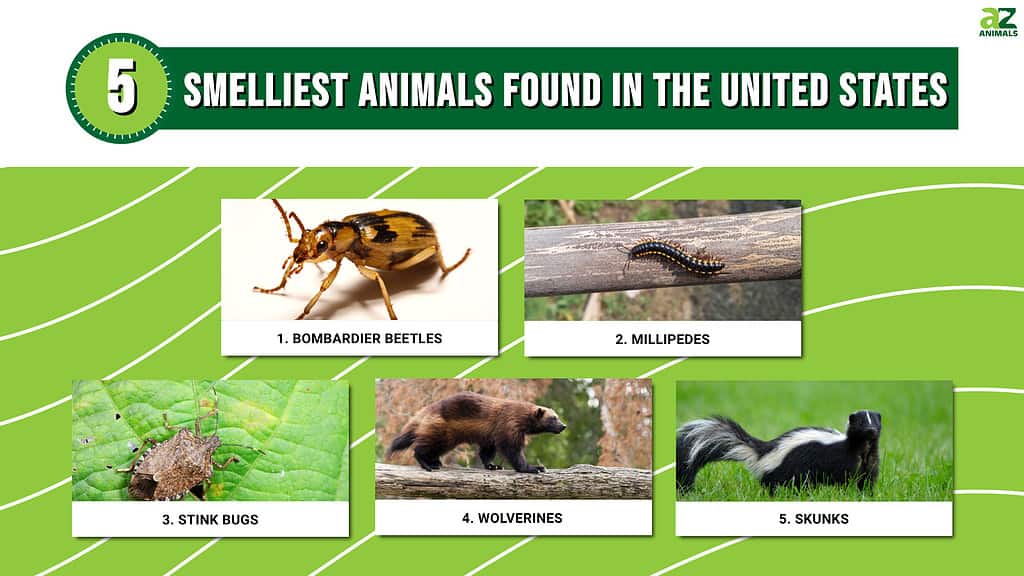
1. Bombardier Beetles
Bombardier beetles aren’t often the first animal to come to mind when we think about things that stink, but they are one of the rank animals in the United States. In fact, the beetles are named for the boiling, caustic acid their bodies make, which is made of hydrogen peroxide, hydroquinone, and catalytic enzymes. Following production, this smelly liquid bursts from the Bombardier beetle with a popping sound. The heat and bomb-like explosiveness of this ejection is what gives the Bombardier beetle its name.
So, where are they found? Bombardier beetles live across the Western United States, and most often in cool, moist environments. Woodlands and grasslands that get a larger amount of moisture are perfect environments for reproduction.
You can find more information about the habits and lives of these beetles by visiting BugGuide.
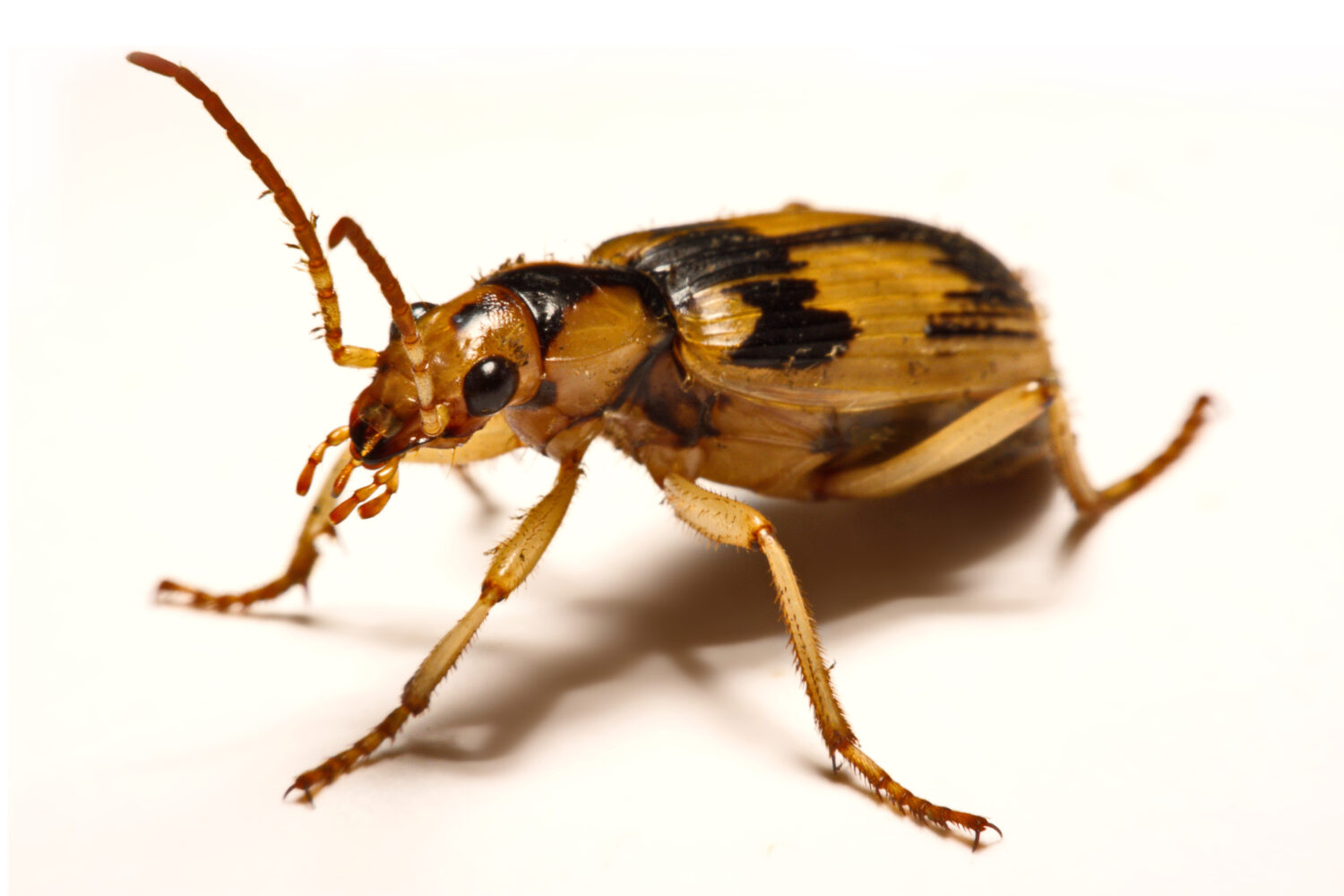
There are over 500 different types of Bombardier beetles, but they all have the same explosive power.
©KASIRA SUDA/Shutterstock.com
Millipedes
Next up are Millipedes! Millipedes inhabit every US state, including Alaska and Hawaii. More importantly, these smelly invertebrates produce a toxic mix of phenol, cresols, iodine, quinone, and other organic acids, which causes their bodies to emit a foul stench! On top of the smell, this blend of chemicals commonly causes rashes and blistering when it comes into contact with the skin.
Some kinds of millipedes carry more toxins than others. That means it’s important to be wary of them when you do encounter them. There is even a species of millipede – Harpaphe Haydendiana – that excretes cyanide as a form of self-protection. It is native to the Pacific Northwest and can reach a length of two inches! The University of Florida Health has a great resource on the basic treatment of skin irritation caused by millipede toxins.
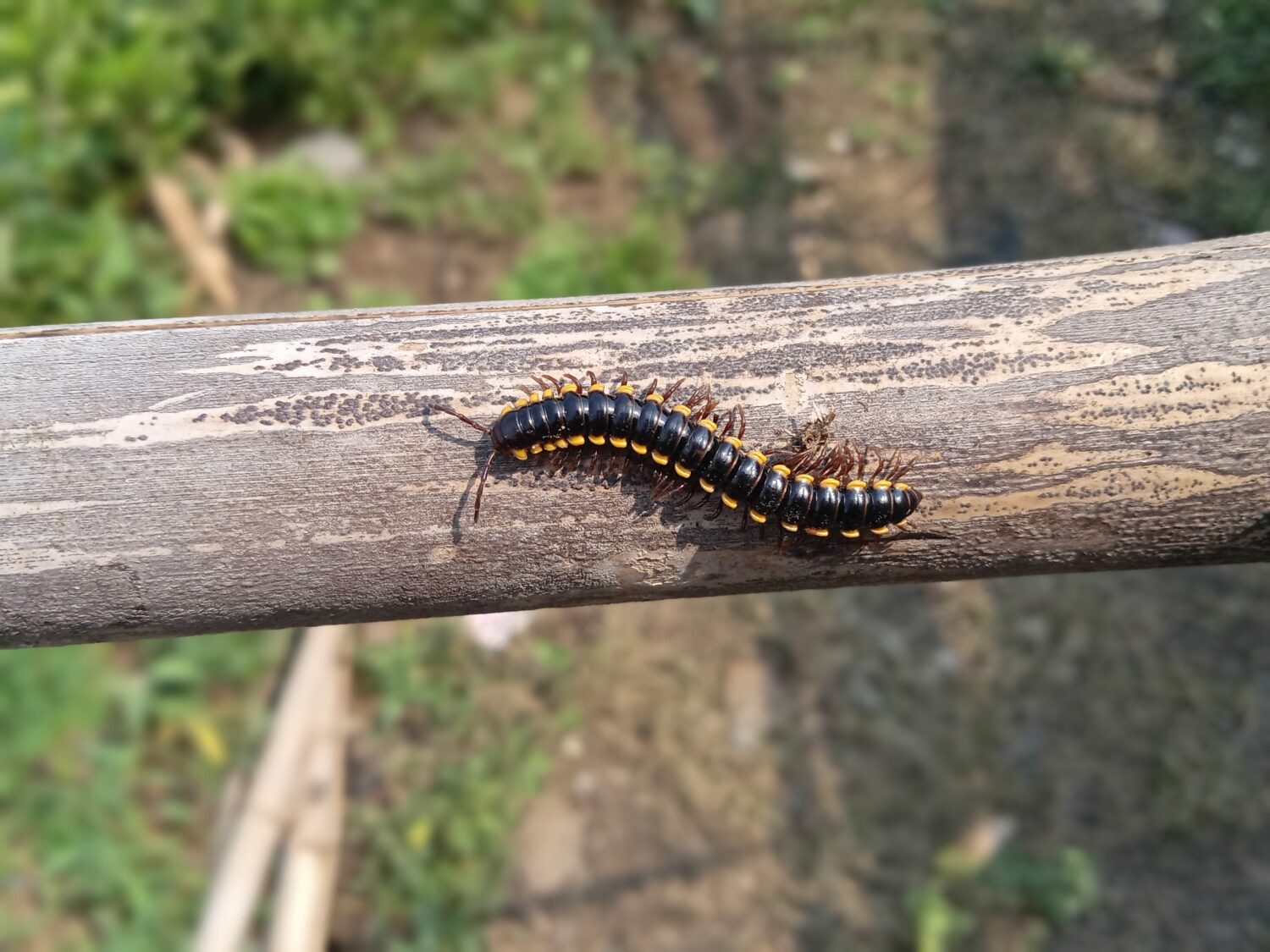
A yellow-spotted millipede – also known as a cyanide millipede – has distinctive yellow markings at the base of its legs.
©Bakulane Ripki/Shutterstock.com
3. Stink Bugs
Now, we take a look at Stink bugs, who live up to their names quite well! Stink bugs are invasive and have a history of being foul. While they are mostly harmless to humans, they are still a dangerous agricultural pest and have no natural predators in the United States. They live in every state, and the EPA (Environmental Protection Agency) is working to manage their spread.
But why are Stink bugs so smelly? Well, North Carolina State University has a page all about this, but let’s sum it up here. Similar to the other animals on this list, the Stink bug produces a mixture of chemicals, which it then releases through its thorax when threatened.

Stink bugs are easy to recognize from their shield-like bodies and smelly odor.
©junrong/Shutterstock.com
4. Wolverines
While the Wolverine gains fame from its vicious behavior, it also has a reputation for its wretched smell. By spraying a horrid stench from its anal glands, the Wolverine has earned itself the nickname ‘Skunk Bear‘. It makes sense, then, that it would be so well known for the strength of its spray. Luckily, this dangerous beast is only native to a few states, such as Montana, Idaho, Washington, Wyoming, and a small portion of Oregon.
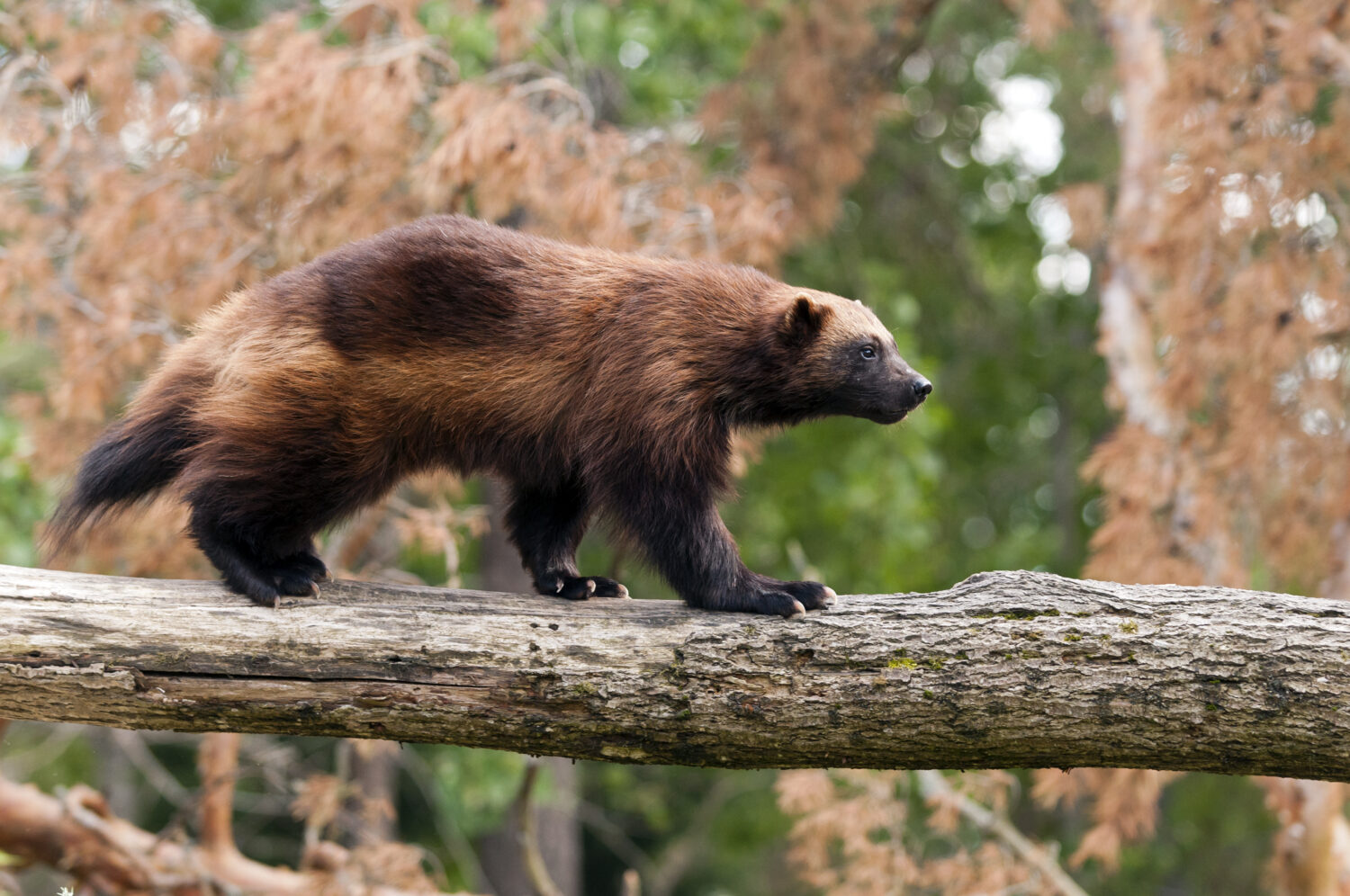
Wolverines use their signature stink to mark their territory, protect their food, and for self-defense.
©Nazzu/Shutterstock.com
5. Skunks
Last, but certainly not least, is the skunk. Skunks can be found in all fifty states, though they are most likely to live in areas where they can create safe dens. With a spray from its anal glands that can reach over ten feet, this carnivorous mammal is quite smelly! Remarkably, the smell of a skunk’s spray is perceptible from almost a mile away! Skunks are nocturnal, which plays a role in the development of their special abilities. A strong defense against ambushing predators is vital to the lifestyle and survival of an animal that exists in solitude and darkness.
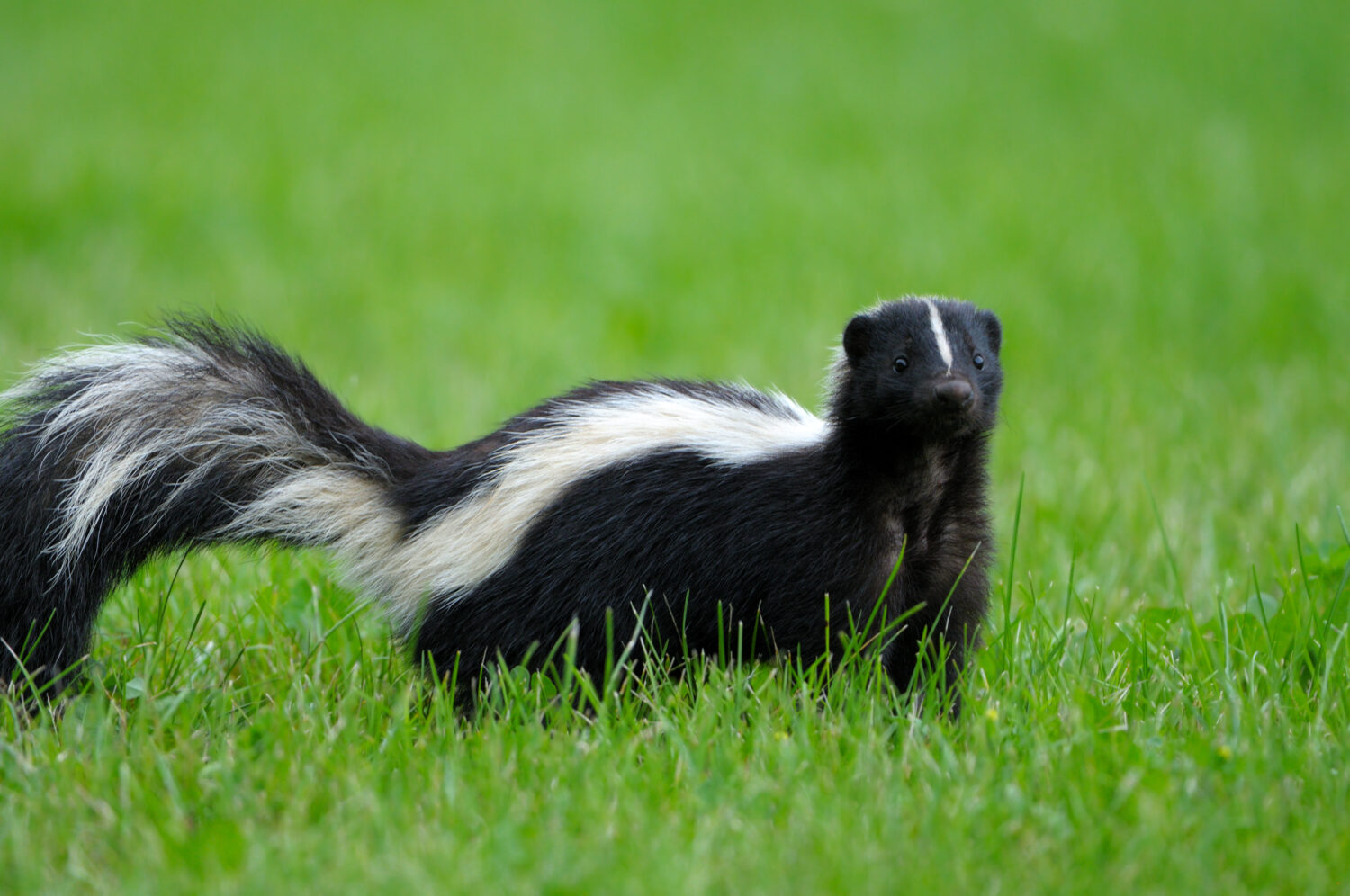
Skunks perform a dance before spraying as a warning.
©Jemini Joseph/Shutterstock.com
So, Why Are These the Smelliest Animals in the United States?
What makes some animals smellier, and why? Well, it’s good to know that animals evolve due to natural selection. In a process known as ‘animal adaptation‘, some animals develop traits that aid in their survival. This is true of our pungent pals! All of the animals listed here – and many more – emit strong odors to protect themselves from predators, and to ensure the species lives on. In conclusion, we should admire these life forms and learn more about them – from a distance, of course!
Summary of 5 of the Smelliest Animals Found in the United States
| Number | Animal |
|---|---|
| 1 | Bombardier Beetles |
| 2 | Millipedes |
| 3 | Stink Bugs |
| 4 | Wolverines |
| 5 | Skunks |
The photo featured at the top of this post is © Nynke van Holten/Shutterstock.com
Thank you for reading! Have some feedback for us? Contact the AZ Animals editorial team.






